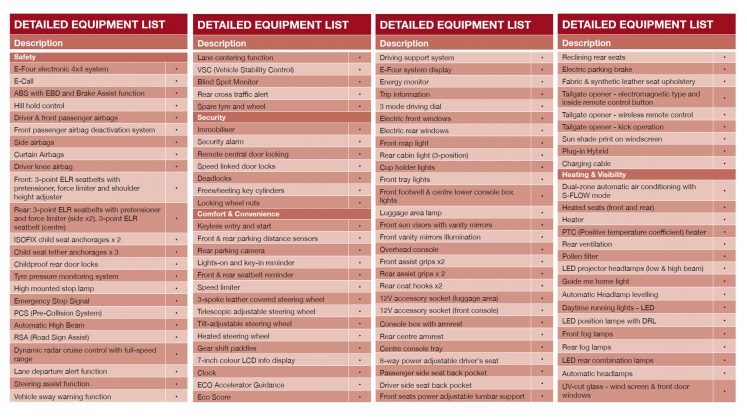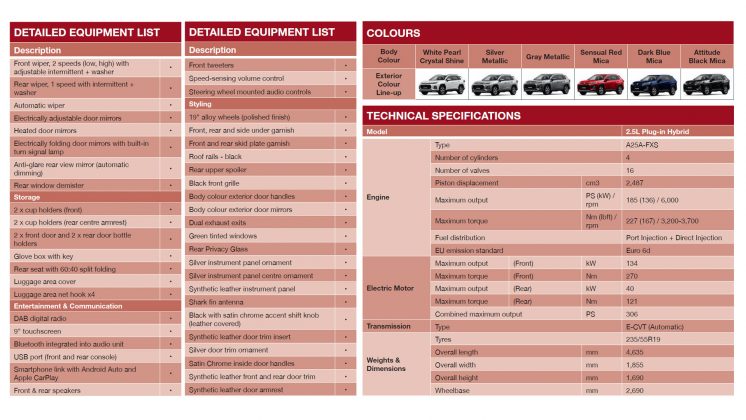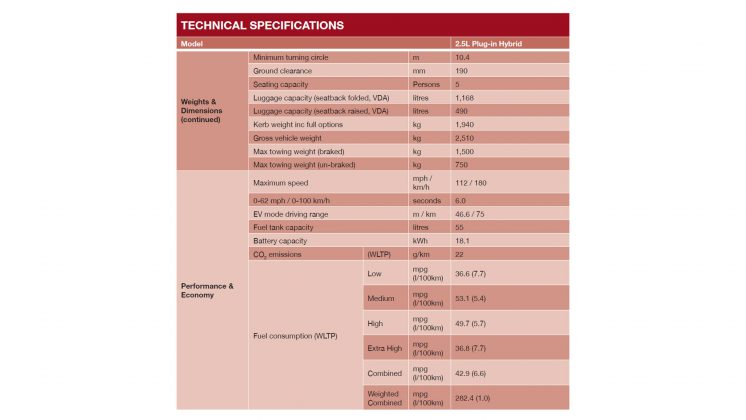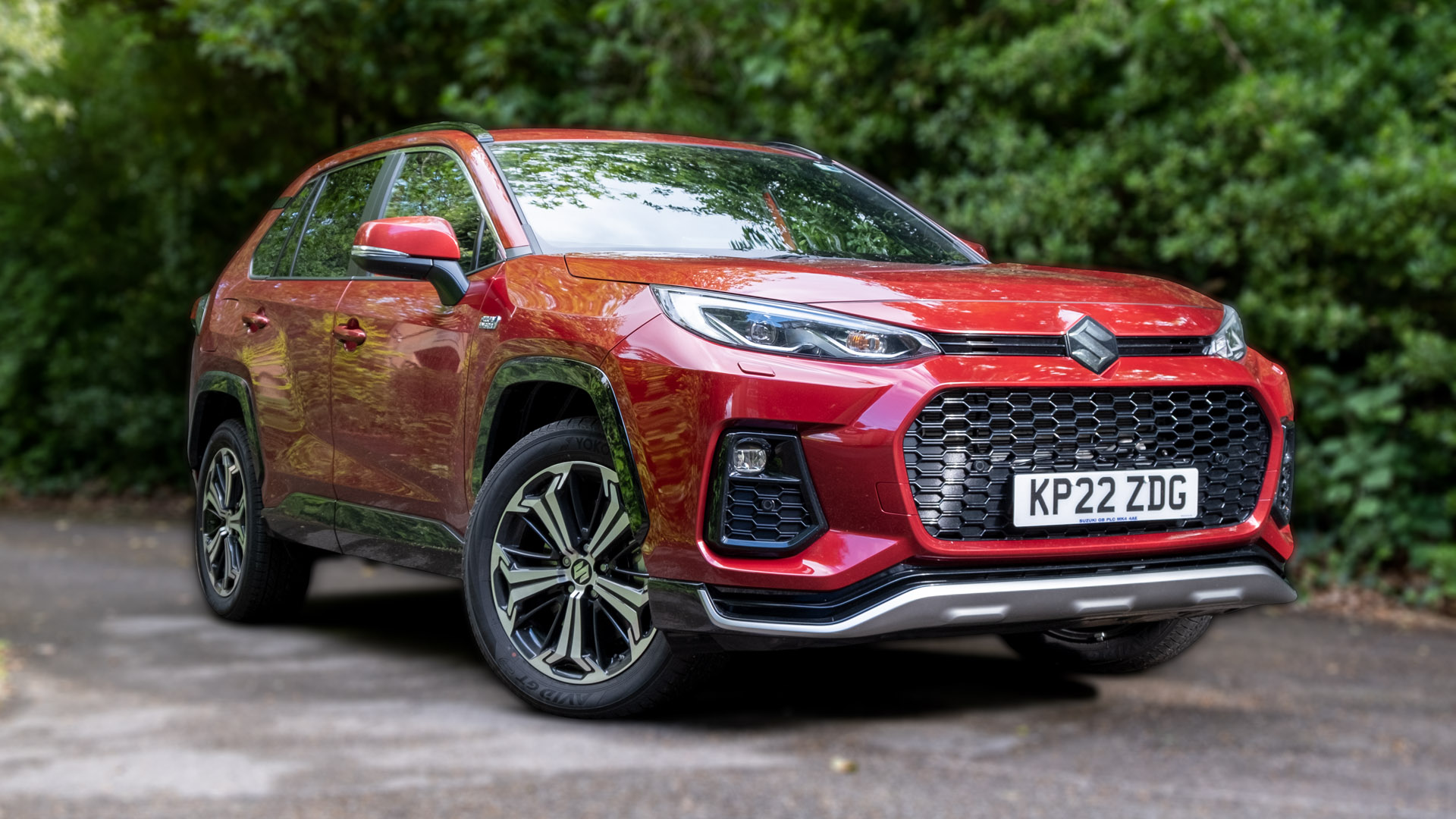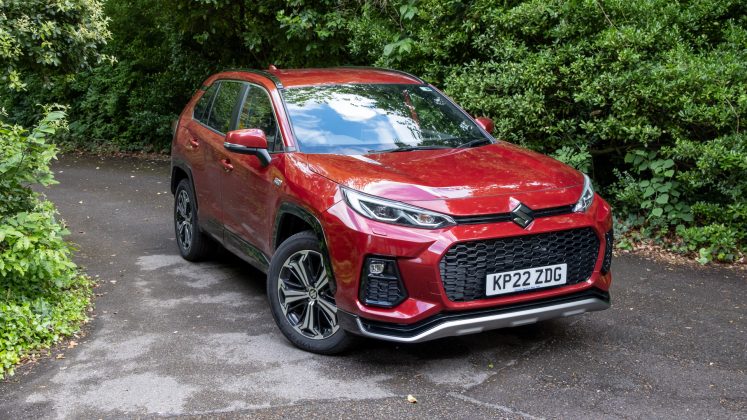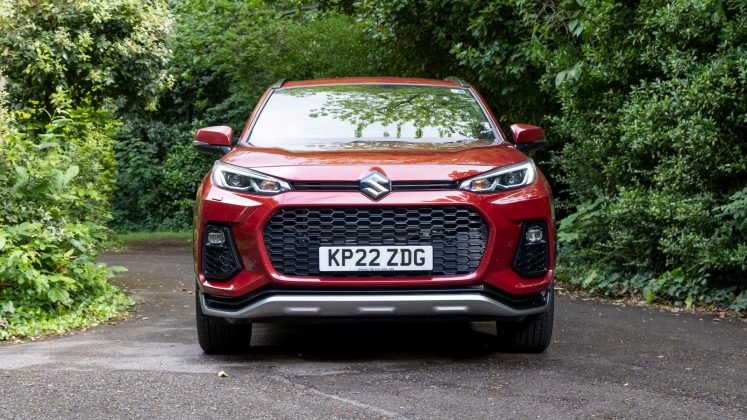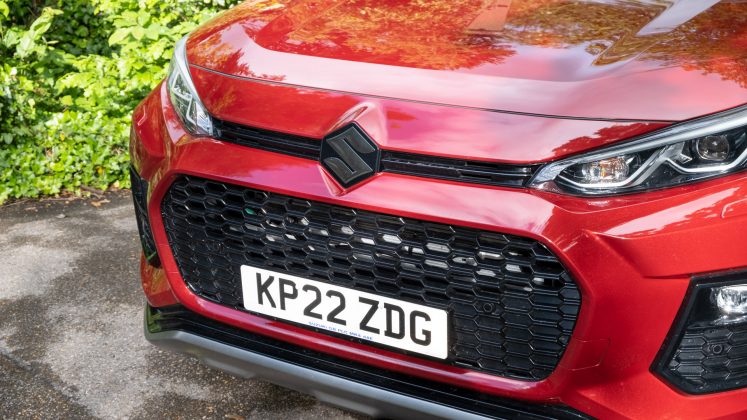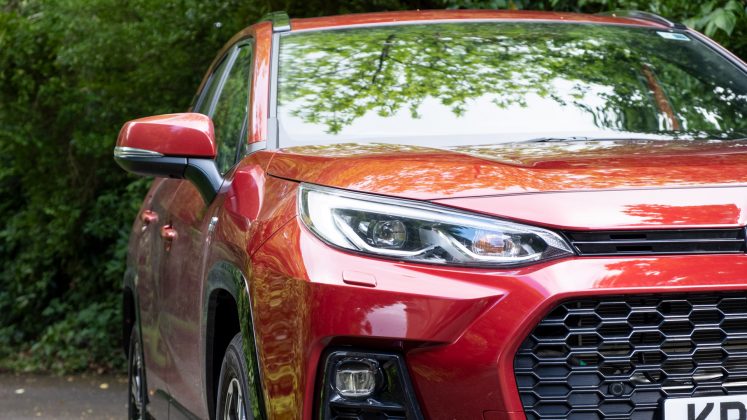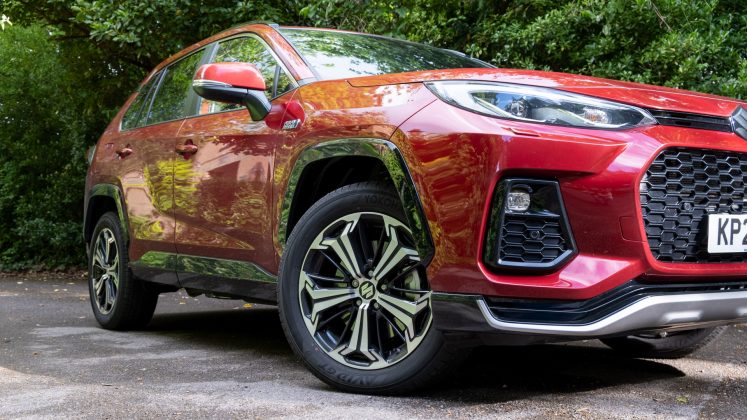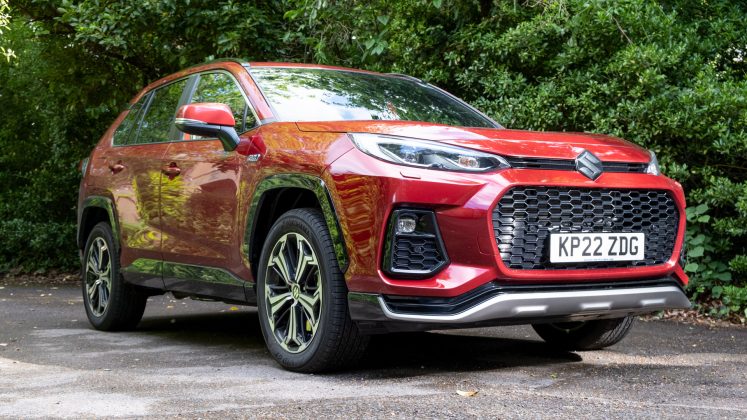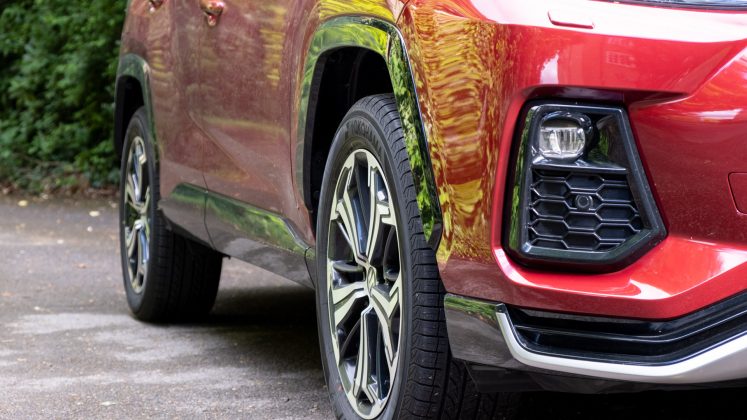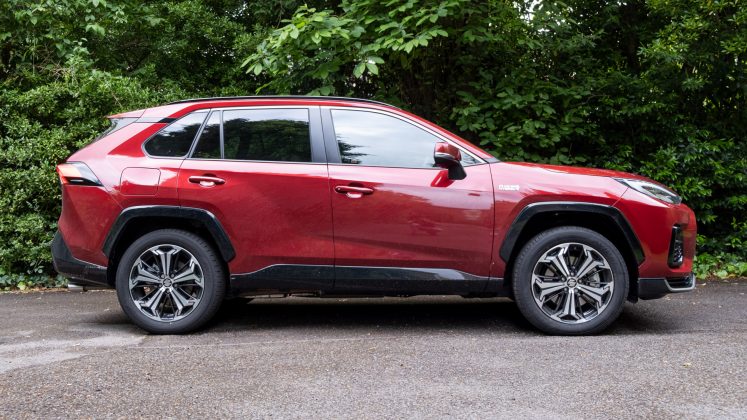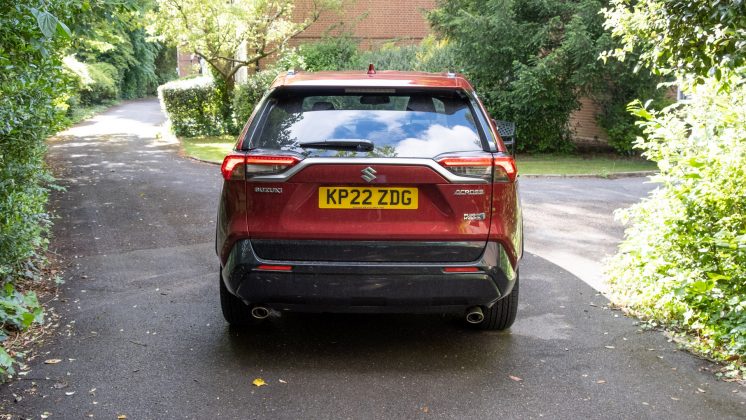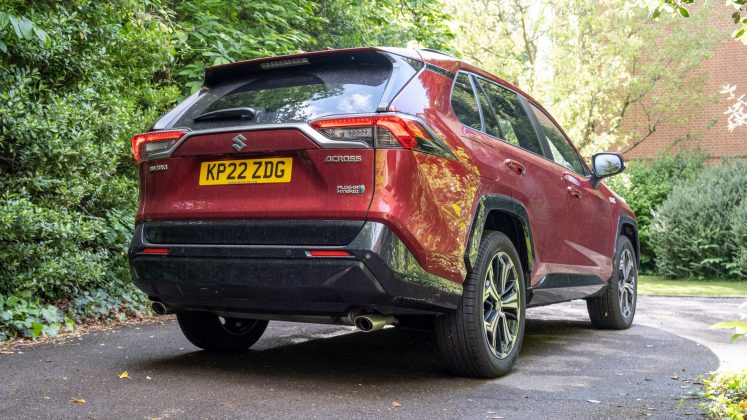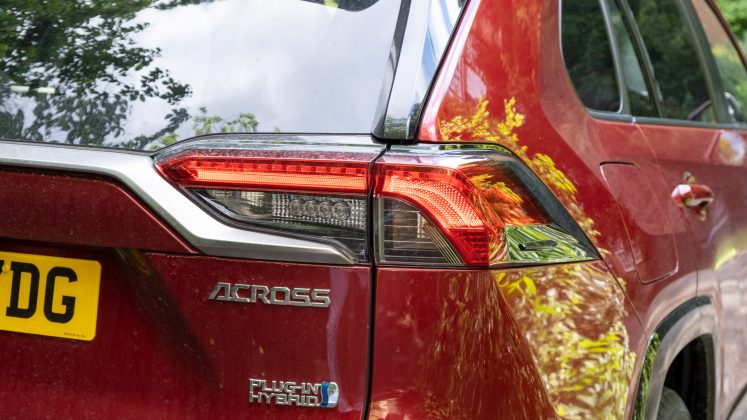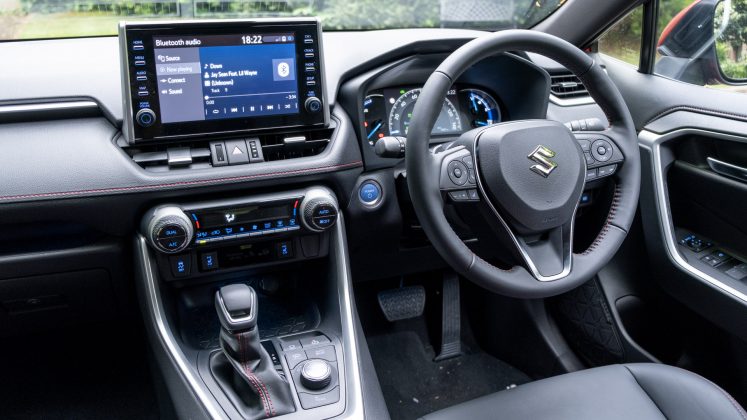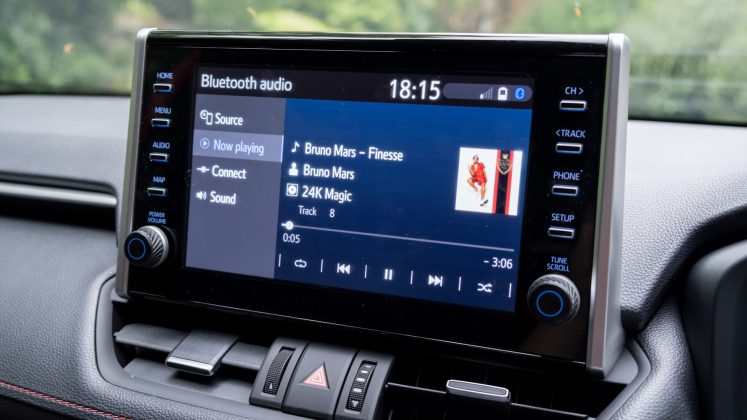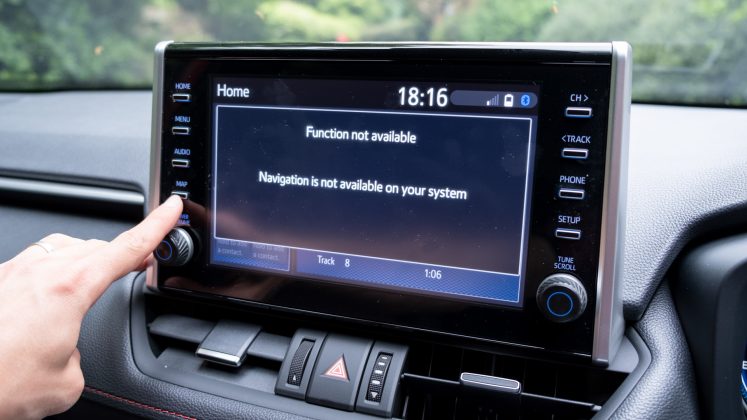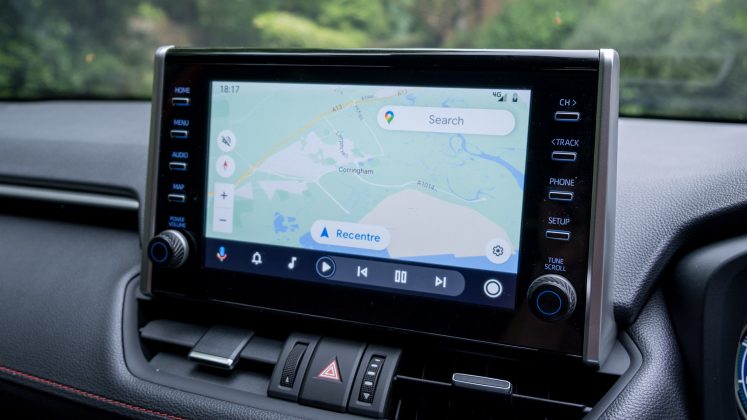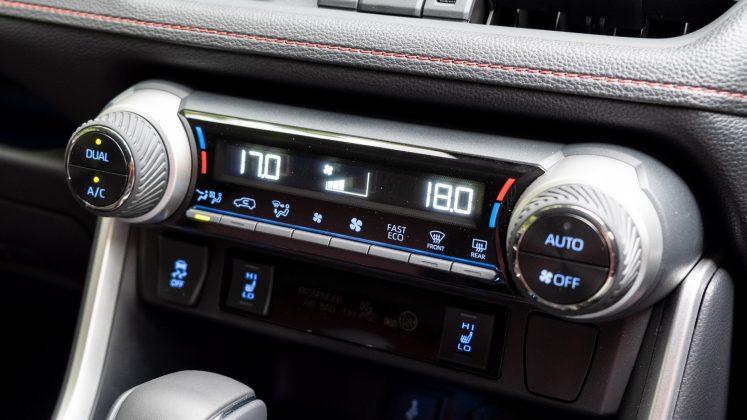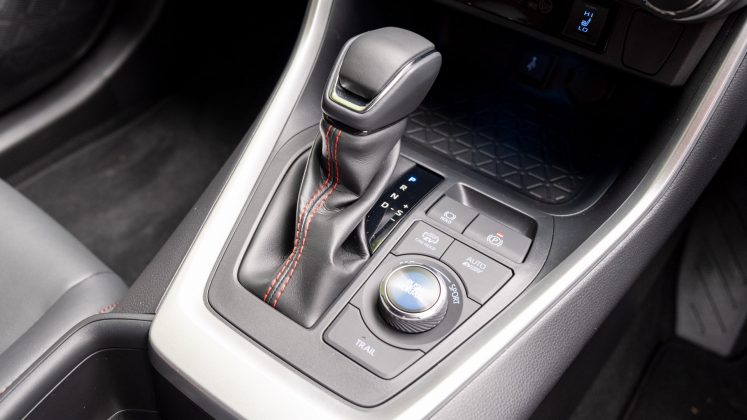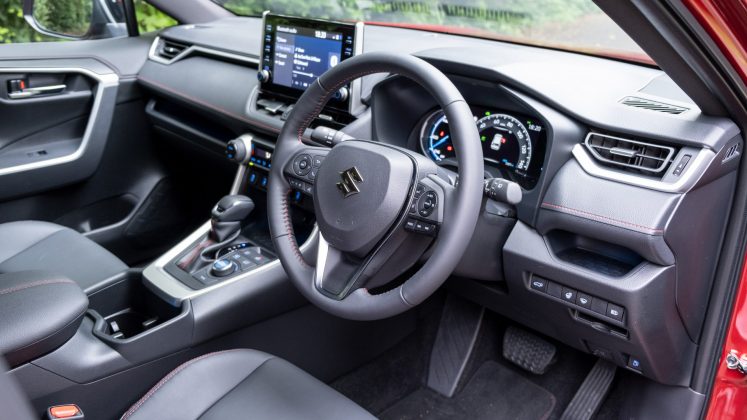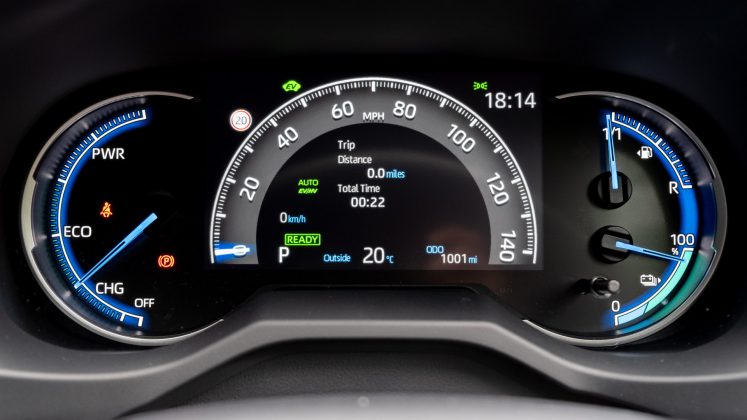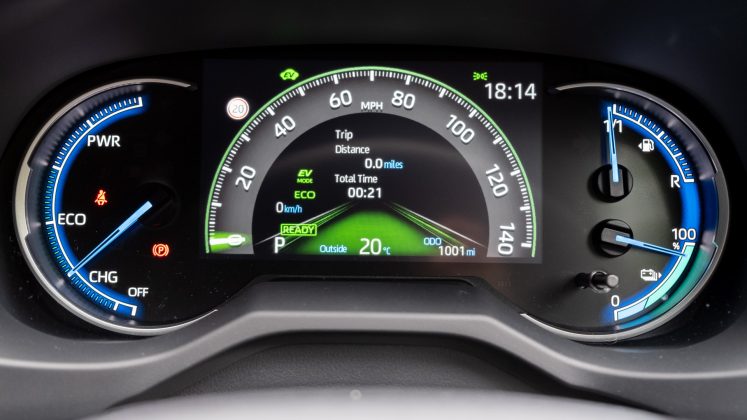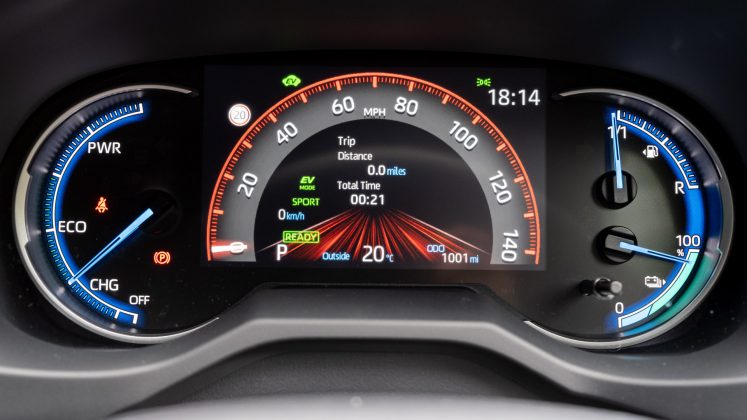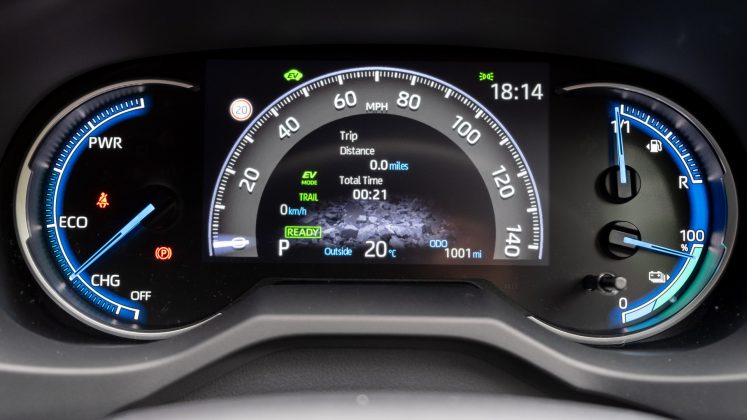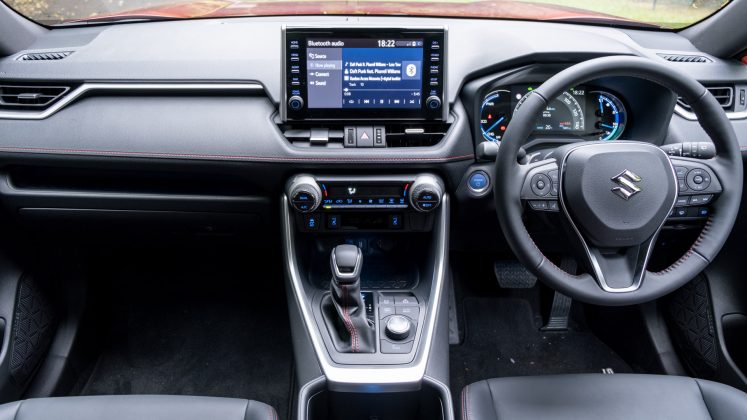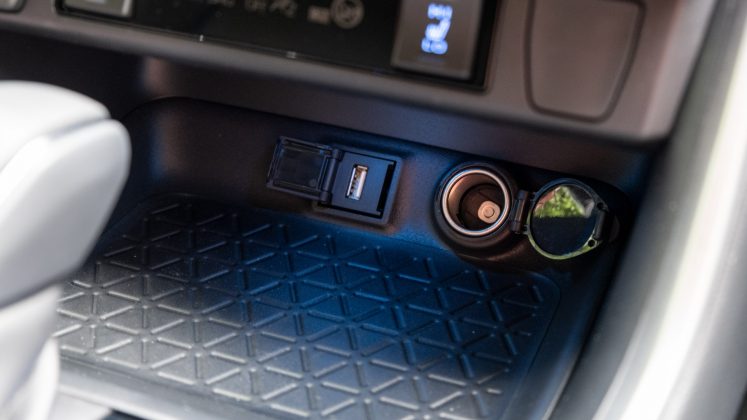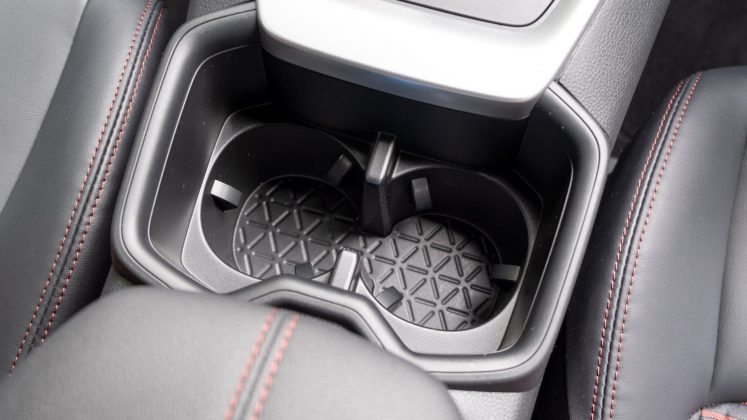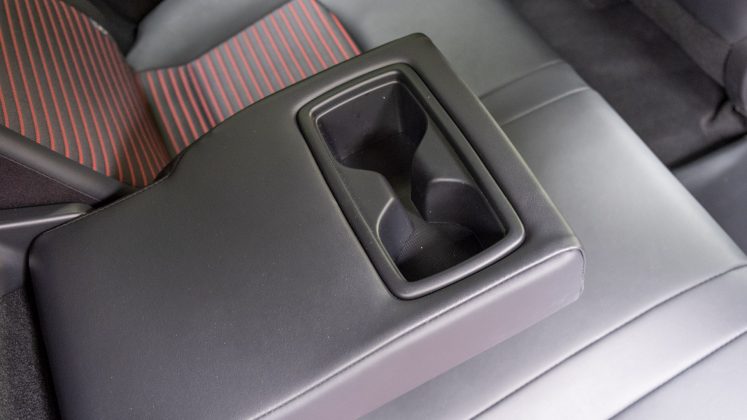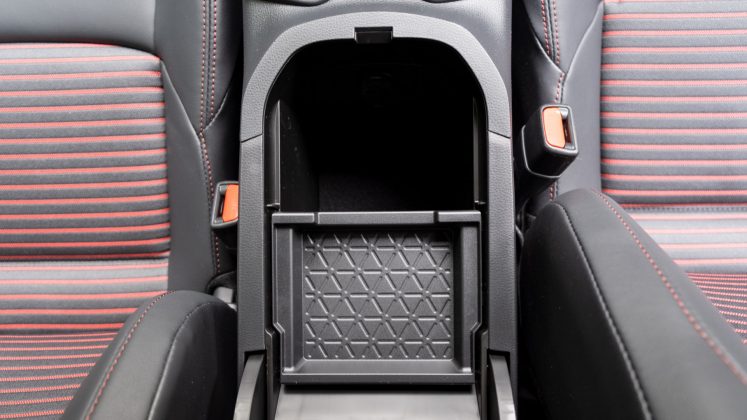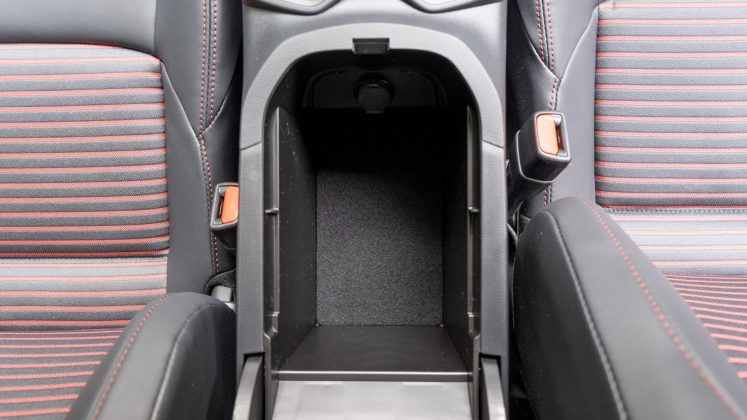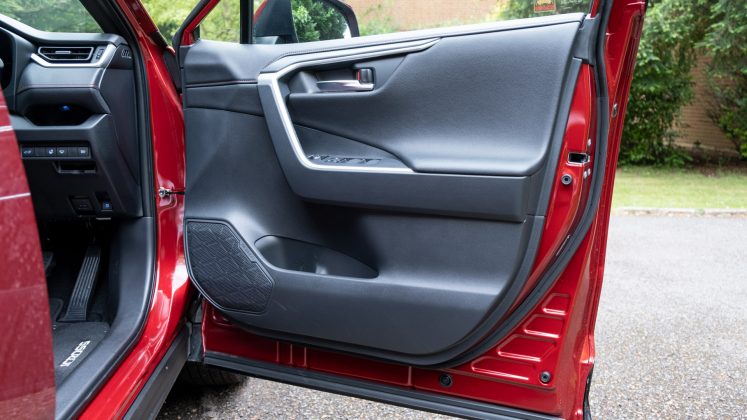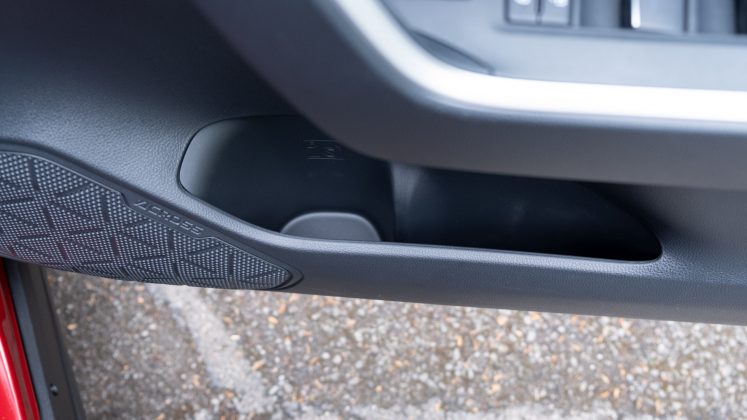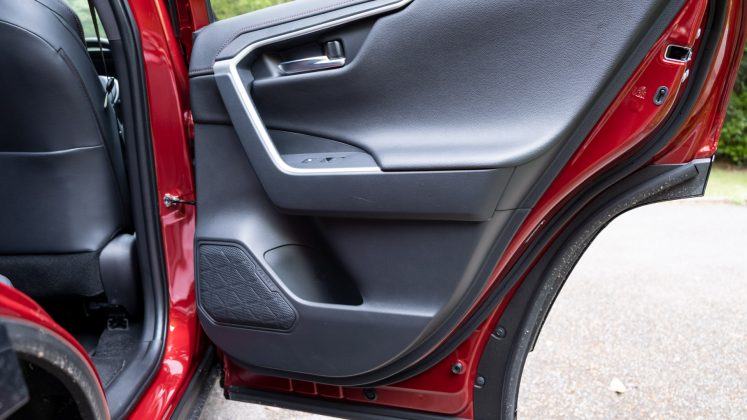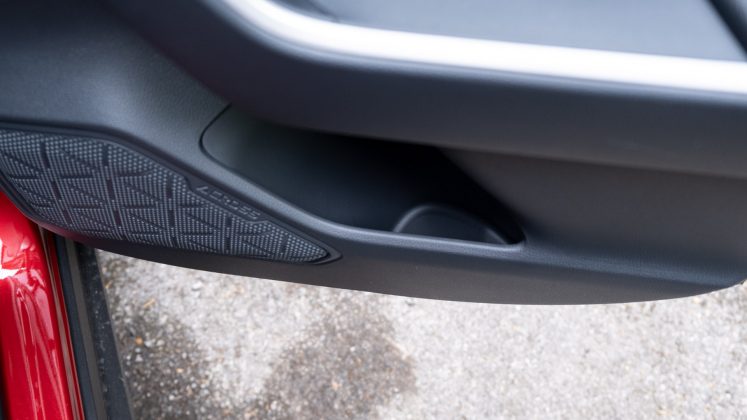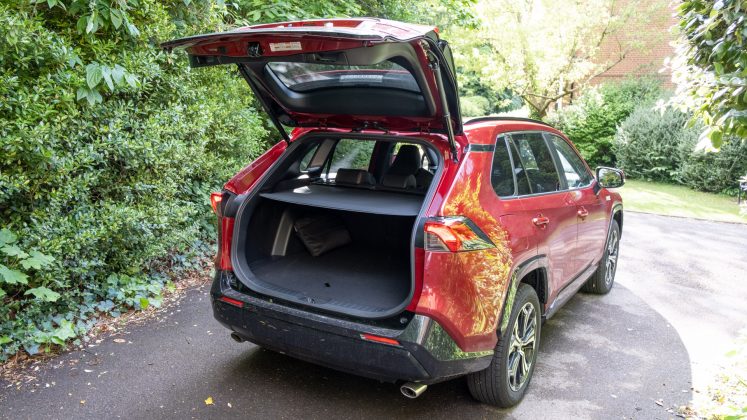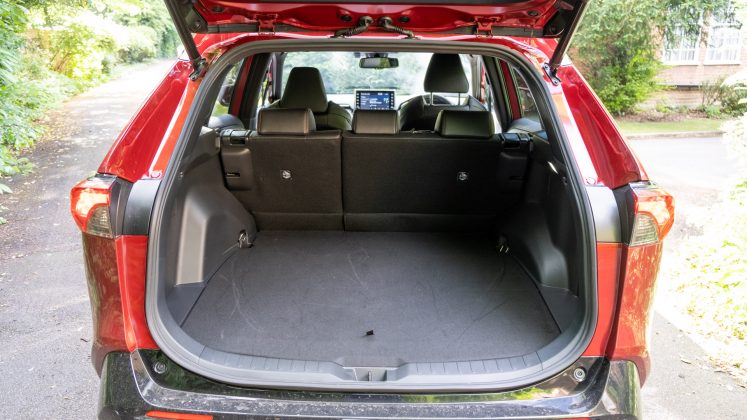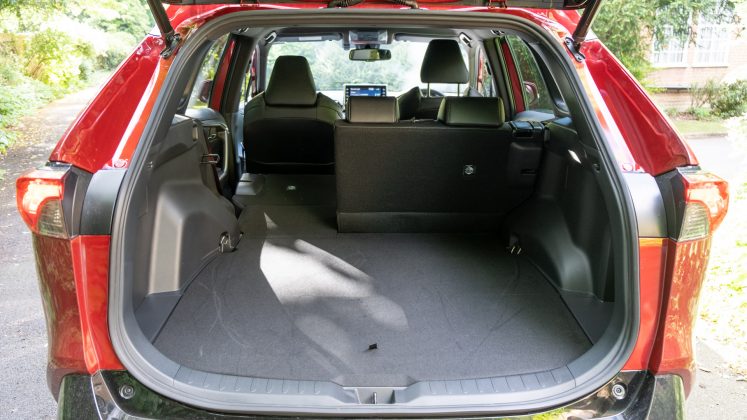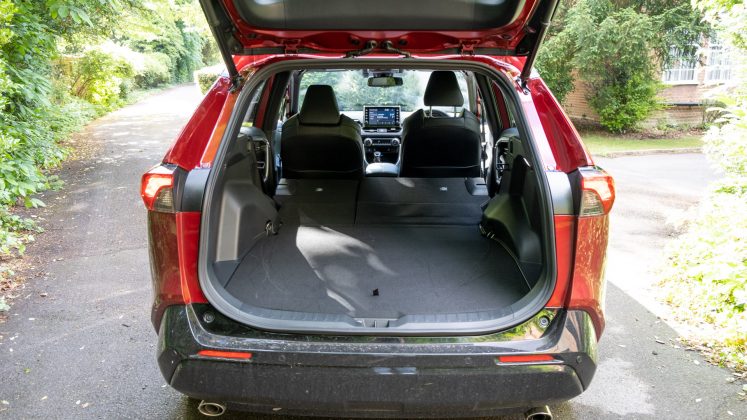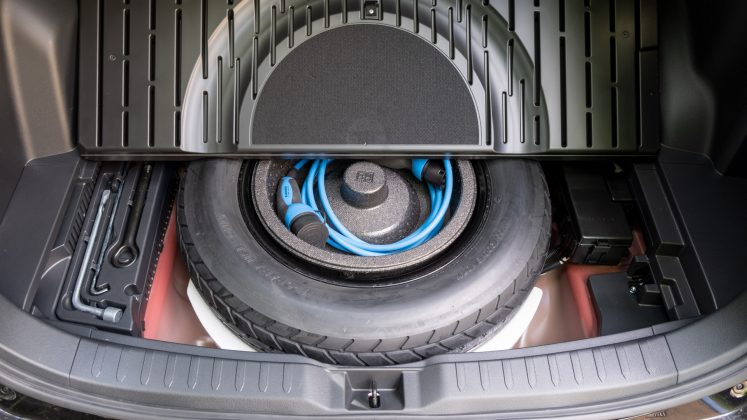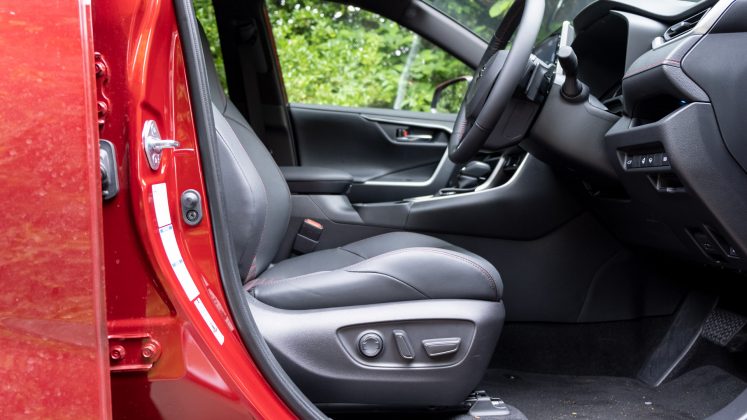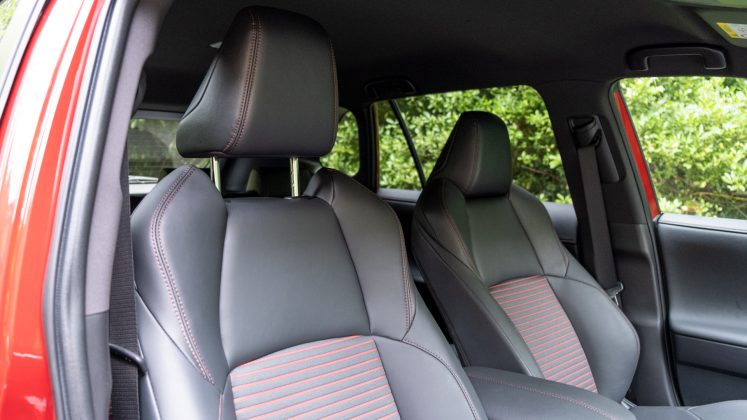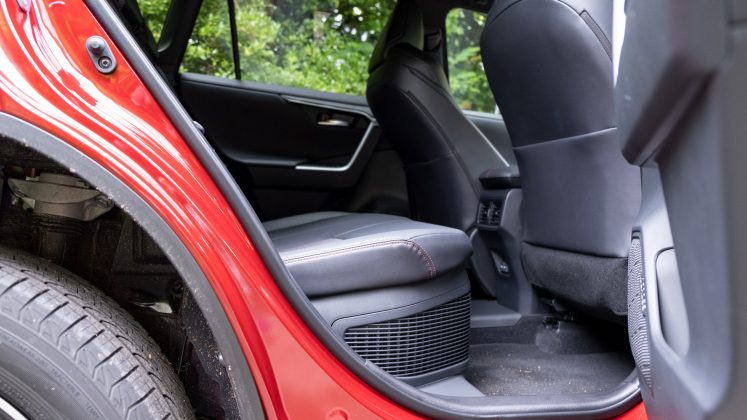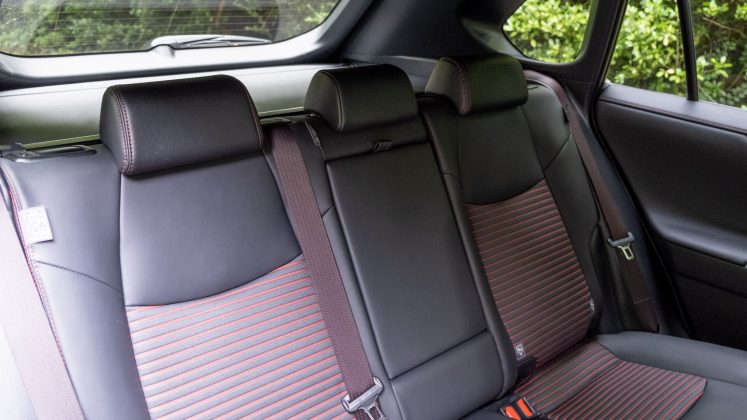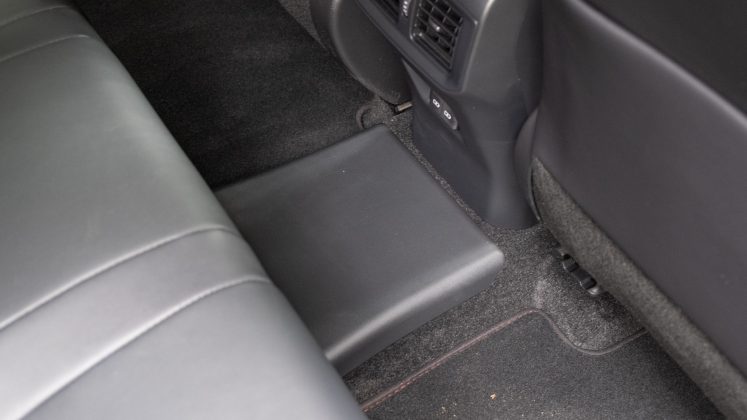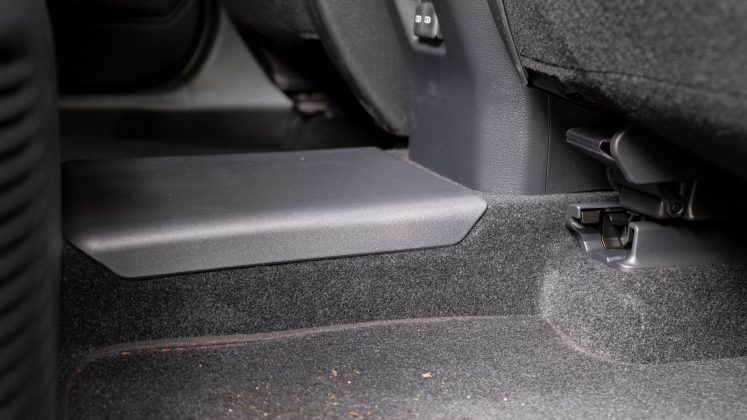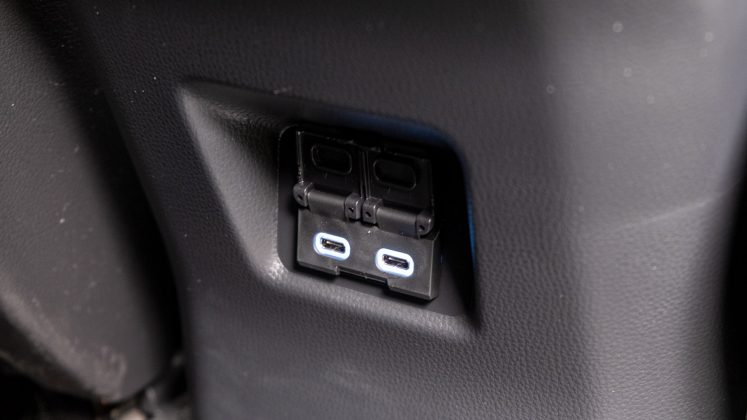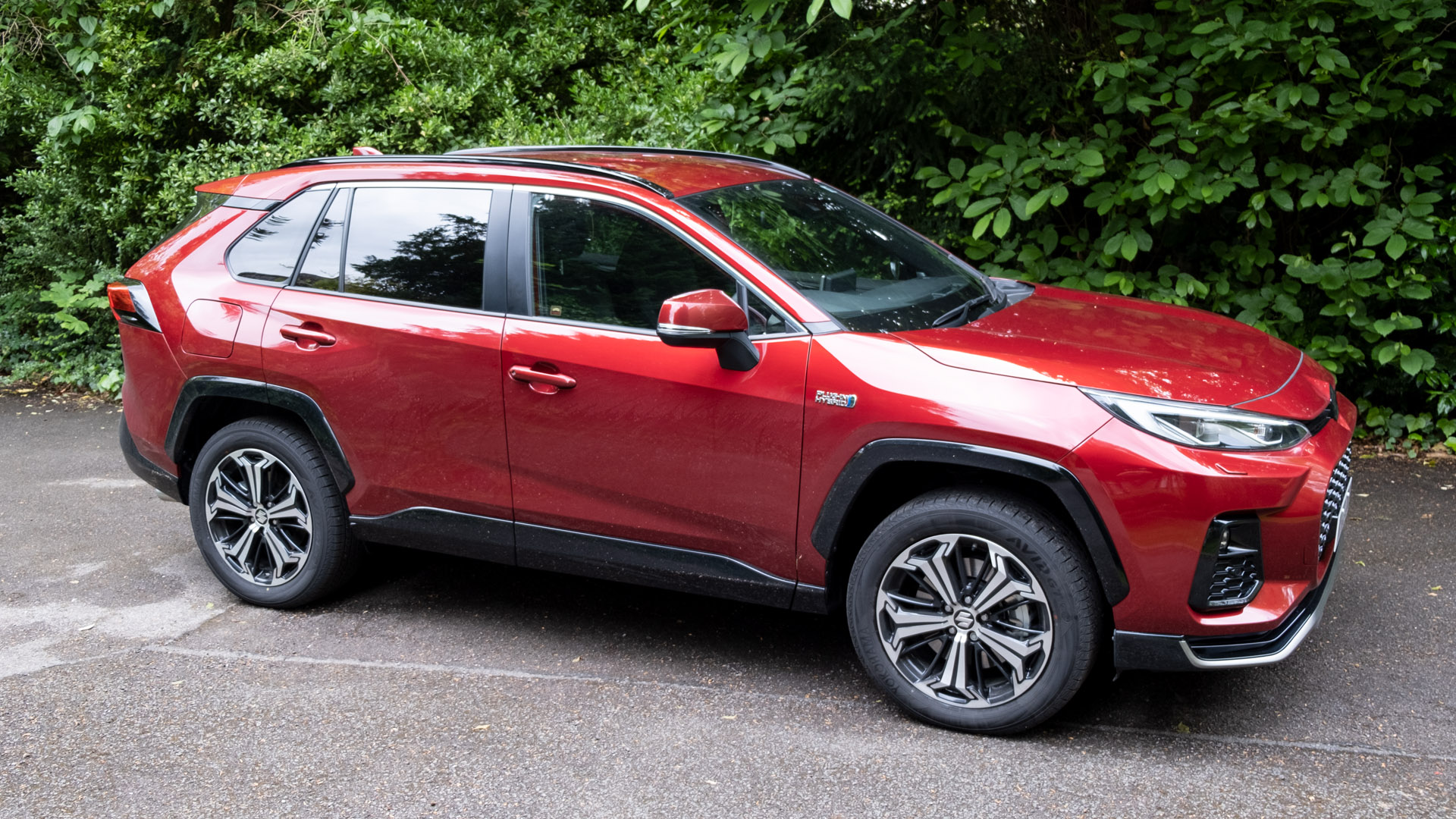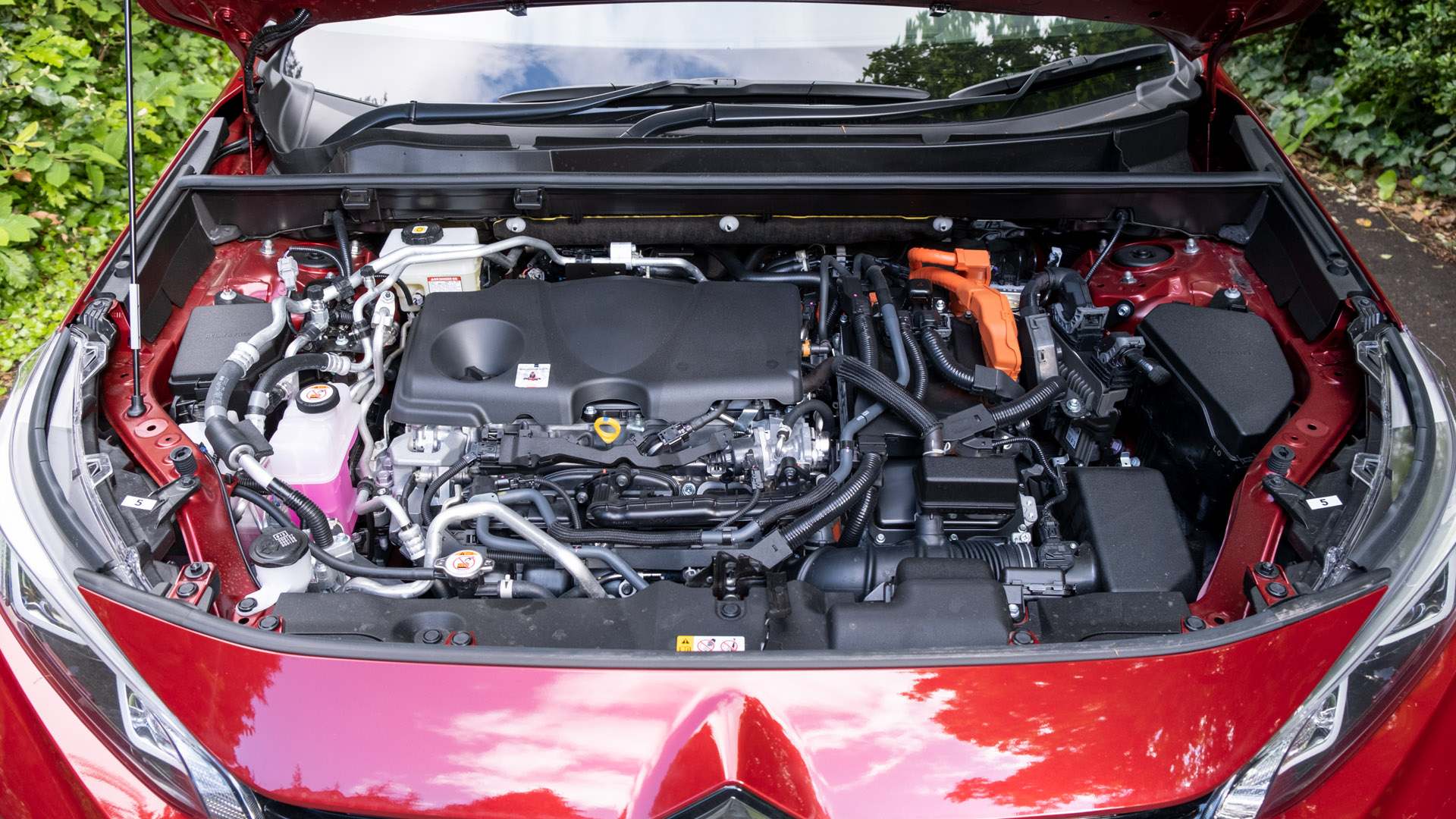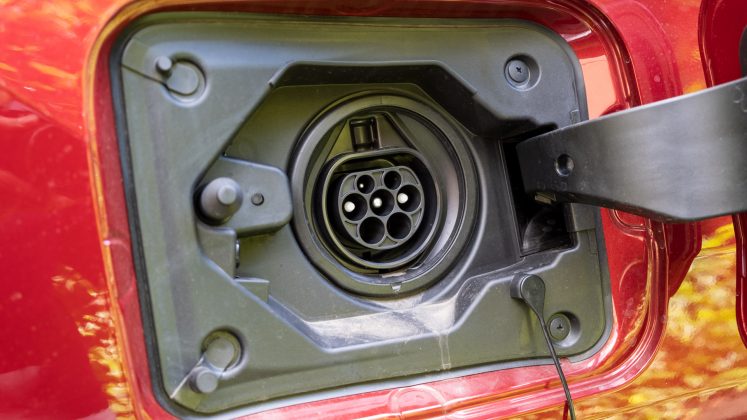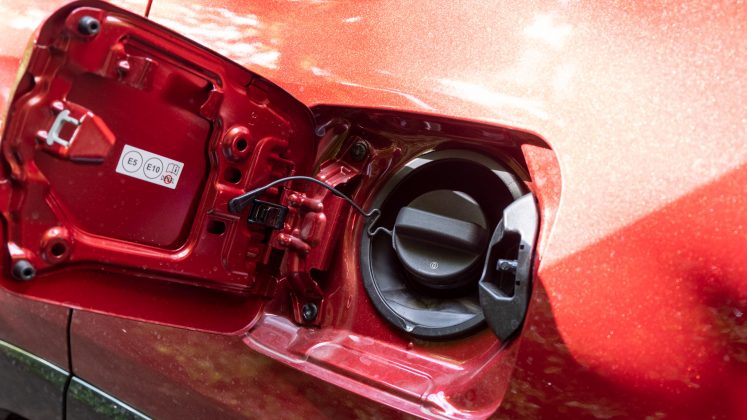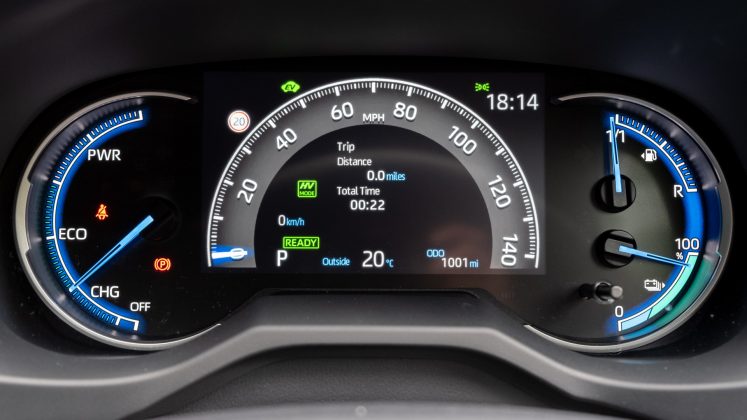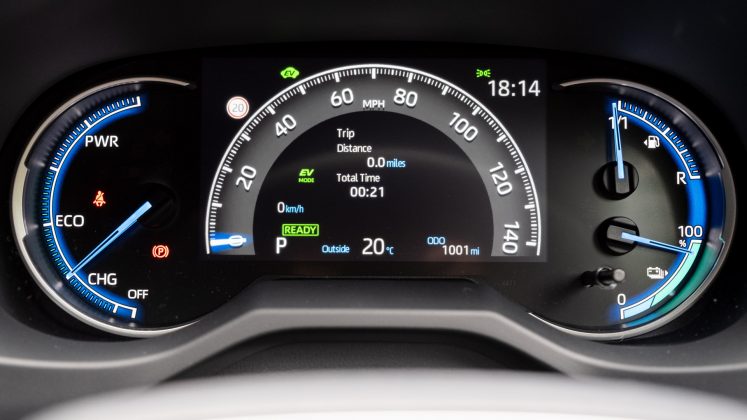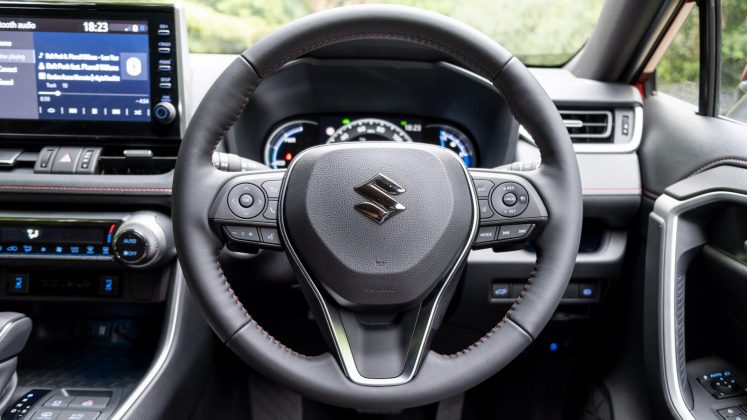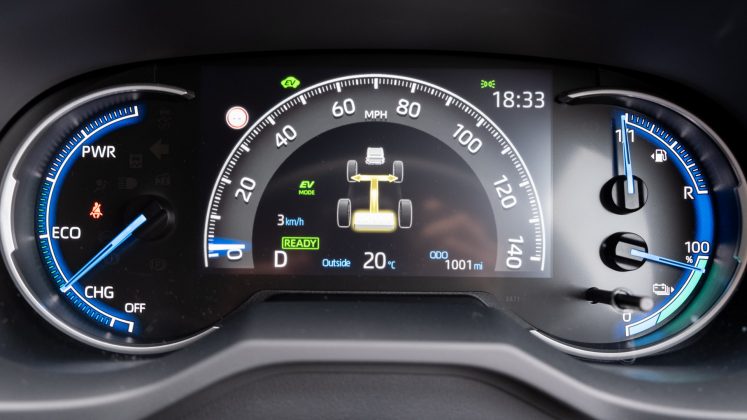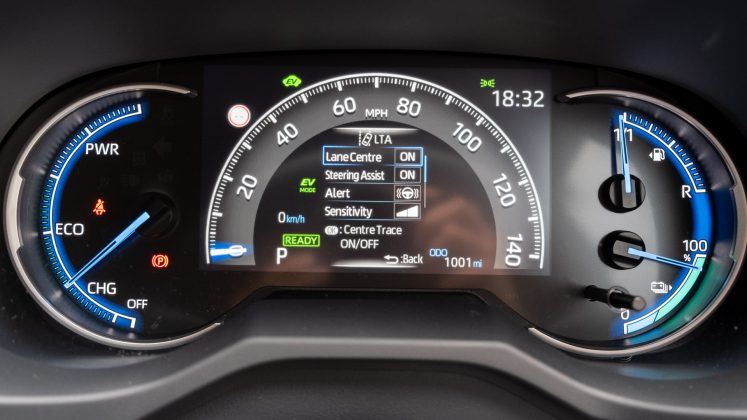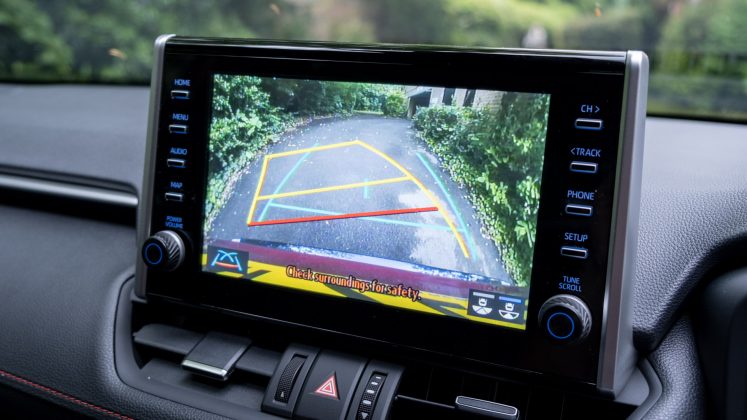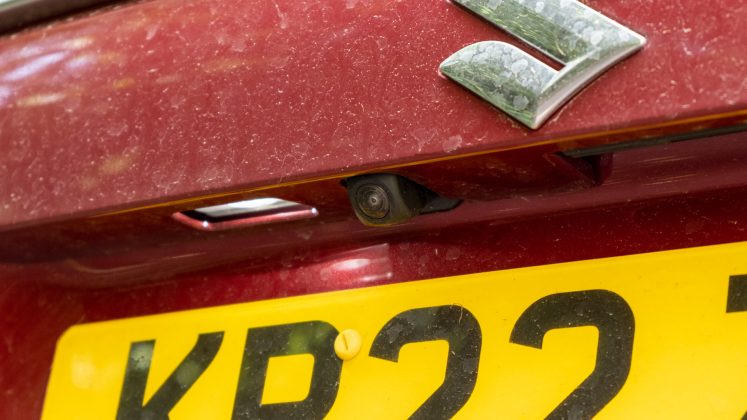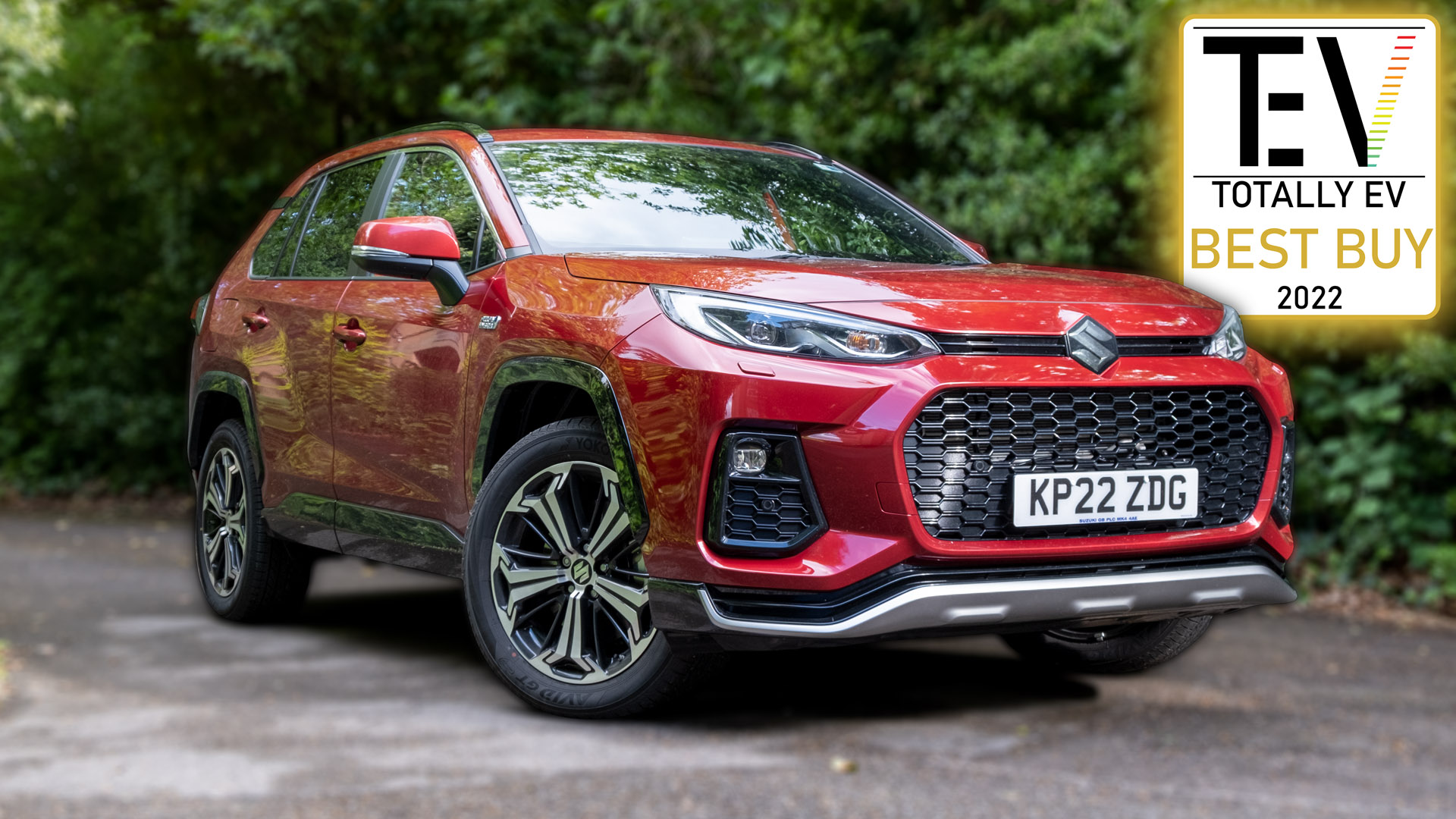The Suzuki Across plug-in hybrid was revealed in July 2020 and in many ways, is identical to the Toyota RAV4 PHEV. That’s because the two companies announced a collaborative development programme back in 2019, where the automakers would help each achieve lower CO2 emissions targets.
Suzuki provides Toyota with smaller cars, and in return receives a helping hand in launching larger segment vehicles to market, such as the Across which has both self-charging and plug-in capabilities.
If you’d prefer to watch a review of the Suzuki Across, head on over to our YouTube channel.
Suzuki Across price & competition
The problem, however, with newer car technologies is that both the Suzuki Across and Toyota RAV4 PHEV have steep asking prices. The former costs £46,629 while the latter starts from £43,130. Thankfully, the Across is fully loaded with features, which isn’t the same that could be said about a lot of its rivals – click to expand the images below to see what comes fitted as standard:
Find the best Suzuki Across deals
When it comes to its rivals, are plenty of PHEVs to consider: MG HS Plug-in Hybrid from £31,095; Citroen C5 Aircross Hybrid from £35,080; Vauxhall Grandland X Hybrid from £35,570; Ford Kuga PHEV from £37,255; Cupra Formentor e-Hybrid from £37,770; Peugeot 3008 Hybrid from £37,980; Audi Q3 TFSIe from £39,385; DS 7 Crossback E-Tense 4×4 from £43,050; BMW X2 xDrive 25e from £43,295; Kia Sorento Plug-in Hybrid from £46,445; BMW X3 xDrive30e from £52,135; Audi Q5 TFSIe from £52,965.
Elsewhere, you have the self-charging Honda HR-V that starts from £28,835 and the Toyota RAV4 self-charging hybrid from £33,930.
Buy a car phone mount on Amazon (Affiliate)
Aside from part-electrified vehicles, you might also want to consider a pure electric SUV: the Hyundai Ioniq 5 from £36,995; the Kia EV6 from £40,945; the Ford Mustang Mach-E from £42,530; the Mercedes EQA 250 from £44,495; the Volvo XC40 Recharge at £44,900; the Audi Q4 40 e-tron at £46,065; the BMW iX3 from £60,970; the larger Audi e-tron at £62,560; the Jaguar I-Pace at £65,620; the Mercedes EQC at £65,720; and the Tesla Model X at £102,980.
Elsewhere, there’s the MG ZS EV from £27,745; while the Kia Soul EV and Niro EV ‘2 64’, the Skoda Enyaq iV 60 and Volkswagen ID.4 all start from £34,995. You’ve also got the MG5 EV, an all-electric estate that starts from £28,195.
Read next: Citroen C5 Aircross Hybrid review: A comfy and roomy PHEV
Suzuki Across exterior review
From the exterior, the Suzuki and Toyota are almost indistinguishable from each other – there are some minor aesthetic differences and of course, they have different badges. We would have liked, however, that Suzuki had included body-coloured wheel arches and sideskirts; the black inserts detract from an otherwise stylish side profile, which is aided by 19″ alloys that come fitted as standard.
As for your colour finishes: ‘White Pearl Crystal Shine’, ‘Silver Metallic’, ‘Grey Metallic’, ‘Attitude Black Mica’, ‘Dark Blue Mica’, and the pictured ‘Sensual Red Mica’ are all standard options – you can freely pick a colour that matches your personality.
Read next: Cupra Formentor e-Hybrid review: Better than BMW X2?
Suzuki Across interior review
Inside, the similarities continue with its Toyota sibling, where the Across has a very practical design. Physical buttons reside on the steering wheel, dashboard, centre console and beside the 9″ display. We should point out, however, that the ‘Map’ button doesn’t function with the built-in navigation system, as it’s entirely omitted – indeed, it’s present in the RAV4 but not in the Across.
Thankfully, however, the Suzuki supports both Android Auto and Apple CarPlay over a wired connection, which means that when a smartphone is connected up to the infotainment system, the ‘Map’ button acts as a shortcut to Google Maps or Apple Maps. On that note, it’s a shame that the automaker hasn’t included wireless Android Auto or Apple CarPlay capabilities, and that the resolution of the 9″ display is rather low.
Should you want to connect over a wireless connection, Bluetooth is supported. This brings us on to the six-speaker, 120 Watt system that comes fitted as standard. Here, the audio system’s performance is lacklustre and without the ability to upgrade it via the manufacturer, audiophiles will be left disappointed. If you’d like to hear how it performs, watch our detailed audio review on YouTube.
As for the 7″ instrument cluster, it’s part-digital and part-analogue, which is rather strange. A fully digitalized display would have provided for greater customisation and allowed for a better user experience. Further, the display disappointingly doesn’t show any turn-based navigation data from Android Auto or Apple CarPlay. Elsewhere, the manufacturer omits a Head-up Display (HUD) and doesn’t provide its customer with the ability to add it as an option, while Toyota offers this in its top-spec ‘Dynamic Premium’ trim.
Read next: Range Rover Evoque P300e review: Best luxury hybrid?
Suzuki Across storage review
Storage within the cabin is plentiful, the centre console has a small bay at the front for a smartphone, two cupholders further down and a compartment under the centre armrest. The door bins are all large enough to fit a 500ml bottle, while the front two offer additional space for small valuables. Of course, there’s also the glove compartment and two cupholders within the rear pull-down armrest.
Our only complaint with the storage areas is that they’re not all lined in fabric, which means if you have loose change or keys, they’ll be constantly rattling while you drive.
When it comes to its boot, there’s 490 litres with the seats up and 1,168 litres with them folded flat. Here’s how its boot capacity compares to a few of its rivals: the Skoda Enyaq iV (585/1,710 litres); VW ID.4 (543/1,575 litres); Citroen C5 Aircross Hybrid (460/1,510 litres); Kia e-Niro (451/1,405 litres); MG ZS EV (448/1,166 litres); Peugeot e-2008 (434/1,467 litres); Cupra Formentor e-Hybrid (345/1,475 litres); Kia Soul EV (315/1,339 litres); BMW X2 xDrive 25e (410/1,290 litres); Citroen e-C4 (380/1,250 litres); Mazda MX-30 (341/1,146 litres); Honda HR-V (320/1,290 litres); Hyundai Kona Electric (332/1,114 litres). As for the MG5 EV estate, it offers 464 and 1,456 litres, respectively.
The Across has 60:40 split-folding rear seats, a flat loading bay, a 12V socket and a large underfloor compartment, which also houses a few tools, a small jack and a spare wheel – it’s quite rare to see a full-sized wheel included in a PHEV. Of course, you can remove the wheel from this area to reveal a large area to place a few shopping bags and the vehicle’s charging cables.
One annoying feature, however, is its electric tailgate. While its inclusion is certainly appreciated, especially with hands-free operation and its hatchback design making it even easier to access the boot, the speed at which it opens and closes is excruciatingly slow – making it rather cumbersome to frequent on a daily.
Read next: Our favourite power banks for long journeys
Suzuki Across comfort review
While its tailgate can be rather frustrating to use, the Across is otherwise very comfortable to use as a daily driver. Headroom and legroom are excellent where even at the rear, 7-foot (213cm) individuals won’t feel henned in – it’s stonkingly spacious. Better still, the rear footwell is near-flat, which means the middle occupant won’t be left feeling uncomfortable on longer excursions.
At the front, the seats are also accomodating, where an eight-way power-adjustable driver’s seat means one can easily find the best position. Further, the rear outer seats, the front two and the steering wheel are all heated.
In terms of practicality, there are two USB Type-C ports found towards the rear of the centre console, a Type-A port to connect up to the infotainment system at the front and two 12V ports – one at the front, one within the centre armrest – that provide additional power to electronics, such as a dash cam.
As for cabin noise, the Across is well insulated, whereby tyre and wind noise are kept down to a minimum. One can hear the e-CVT transmission trashing away at the front of the cabin, although, it’s minimal when compared to the Honda HR-V which has a far more audible system.
Read next: New Honda HR-V review: Best hybrid SUV?
Suzuki Across performance review
Indeed, Suzuki uses a Continuously Variable Transmission, which gives the vehicle a sense of ‘going through the gears’. One can select a ‘gear’ by shifting into ‘S’ mode on the gear selector. Should you prefer the vehicle to do it automatically, ‘D’ mode provides a seamless transition up and down the pulley system – Sport mode keeps the revs ticking at a higher RPM, while Normal and Eco mode both focus on bettering fuel economy.
Now while the vehicle likely won’t be frequently driven at speed around windy country roads, it’s worth pointing out that it does suffer from body roll. It’s not as planted as the likes of sportier PHEVs, such as the BMW X2 xDrive 25e or Cupra Formentor e-Hybrid but does make up for this in driving comfort.
Its softer suspension setup makes it a joy to potter around town, where the Across glides over potholes and speed bumps. While it’s not floaty like the Citroen C5 Aircross Hybrid, it’s still among one of the most comfortable SUVs we’ve driven to date.
Find the best Suzuki Across deals
Now one might expect this 2,510 kg SUV to be rather slow off the line, but it’s surprisingly rapid. At the front, the Across houses a 2.5-litre four-cylinder engine, which on its own produced 182 hp (136 kW) of power and 227 Nm of torque. Then, there are two electric motors, one at the front and one located on the rear axle – the former produces 179 hp (134 kW) and 270 Nm, while the latter, 53 hp (40 kW) and 121 Nm. The combination also results in a permanently-engaged all-wheel drive (AWD) system, which further provides confidence in lower grip scenarios.
When combined, the engine and two electric motors output a punchy 302 hp (225 kW) of power. We had the vehicle tested using Racelogic’s Vbox Sport, where we achieved 0-60mph in just 5.94 seconds. This was in Sport mode, with the vehicle set to Auto HV/EV mode. Note, in pure EV mode, the time rose to 9.8 seconds as it doesn’t engage the engine.
This brings us to fuel efficiency. Much like its Toyota sibling, the Suzuki has both self-charging and plug-in capabilities, which means it isn’t limited by its 18.1 kWh battery pack. In other PHEVs, if you are to run out of charge on a cross-country trip, you’ll start to decrease your fuel efficiency as opposed to driving a pure petrol/diesel vehicle, due to having to lug around heavy batteries.
While this is still relevant in the Across, once the batteries are depleted, the engine will charge it. As soon as you approach an urban area or are faced with traffic, the vehicle will intelligently switch to electric power in order to reduce fuel efficiency – it’s seamless and very clever.
Equally, unlike the Honda HR-V or Toyota RAV4 self-charging hybrids, you can further reduce fuel consumption by plugging it in regularly. In pure EV mode, you can drive for roughly 35-40 miles and with the Across housing a 6.6 kW onboard charger (up from 3.3 kW in the original model), it means you can reattain a full charge from empty in just 2hrs 45mins.
All of this does yield good results. In our mixed driving tests, we netted 55 MPG, often pushing 61 MPG when driving in and around town. By comparison, the Cupra Formentor e-Hybrid achieved 64 MPG, the Citroen C5 Aircross Hybrid 58 MPG, the Honda HR-V 55 MPG, the Range Rover Evoque P300e 40 MPG, the BMW X2 xDrive 25e 39 MPG, the Jeep Renegade 4xe 36 MPG, and the Land Rover Discovery Sport P300e 35 MPG. So, despite its clever hybrid powertrain, the Suzuki isn’t quite class-leading but it’s still better versed than some of its competitors.
We should also point out that the Across has a 55-litre fuel tank, and when combined with its electric range, you should be able to cover 450-500 miles without having to stop; of course, that’s not recommended for a multitude of reasons, but it’s good to know you can go the distance.
Another aspect that sets the Across aside from its rivals is the ability to alter and enable regenerative braking on the fly. The flappy paddles behind the steering wheel provide you with such controls. We should note that there’s no means of setting it a desired level – there are four modes, level 4 being weak and level 1 being the harshest; the latter can only be enabled at slower speeds, while on the motorway you’ll be limited to level 2 mode and above.
Furthermore, as soon as the brake or accelerator pedals are depressed the regenerative level resets – quite cumbersome on city commutes. We suspect Toyota/Suzuki is trying to replicate the sensation of dropping gears, nonetheless, we wish the vehicle stored the last-used mode throughout the journey or better still, permanently.
Read next: BMW X2 xDrive25e review: A sporty hybrid crossover
Suzuki Across safety review
When it comes to safety, the Across hasn’t been tested by Euro NCAP, but we suspect it’ll achieve the same 5/5 star rating as its sibling, the RAV4; the Toyota managed an impressive 93% and 87% in its Adult Occupancy and Child Occupancy tests, respectively.
As for the driver assistance systems, the vehicle has a plethora of them fitted as standard: RSA (Road Sign Assist), lane departure alert, steering assist, vehicle sway warning, Lane centring, Blind Spot Monitor (BSM), and dynamic radar cruise control. The latter system is particularly impressive, as it maintains a safe distance from the leading vehicle, keeps you centred on the motorway and further, integrates stop and go technology.
It’s similarly excellent when it comes to visibility around the cabin. Large side windows make it easy to check your surroundings and the rearview isn’t obstructed either. Even better, is the inclusion of front and rear parking sensors, and a rearview camera. While the resolution could be better, it’s still a useful addition.
Read next: Skoda Enyaq iV review: The Volkswagen ID.4 alternative
TotallyEV’s verdict on the Suzuki Across
Granted, the Suzuki Across is expensive, especially when compared to other plug-in hybrids or self-charging hybrids on the market, including solutions from its partner, Toyota. However, it’s rammed with features, offers a punchy driving experience and it’s also efficient, it’s very practical from its large boot to its spacious interior design and to top it off, Suzuki is rated by many as the most reliable automaker – so, the Across should keep its residual value over time.
Find the best Suzuki Across deals
Given its target audience and flexibility with its plug-in and self-charging capabilities, we can see ourselves recommending the Suzuki Across and as such, it receives our Best Buy award.
What do you make of Suzuki’s hybrid SUV? Let us know in the comments section below or via social media; we’re on: YouTube, Instagram, Facebook, Twitter and LinkedIn.

